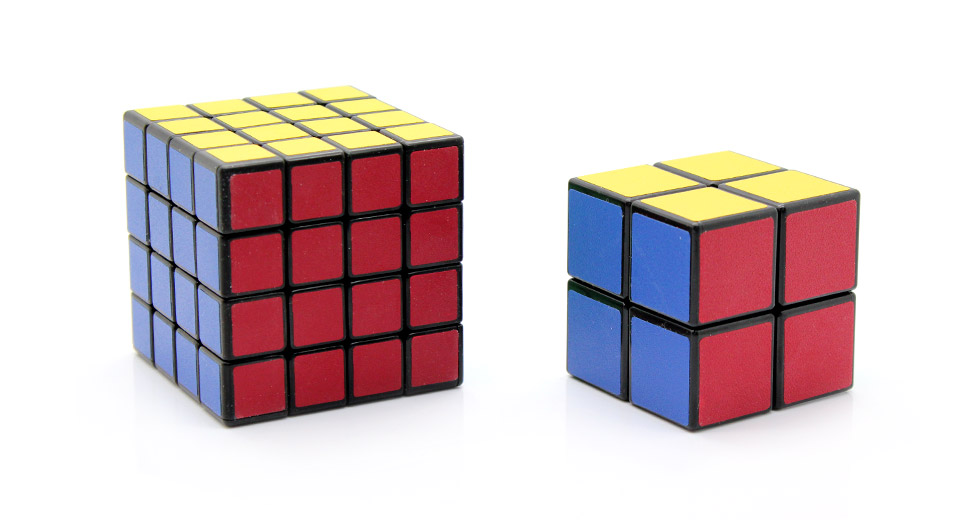Two cubes
Imagine we have 2 cubes of different sizes and volumes, like so:

Given that the sum of the cubes’ volumes is 370 and the sum of the cubes’ sides is 10, most of us instinctively let x be the bigger cube and y the smaller one and reach for simultaneously equations:
x3 + y3 = 370 ----- (1)
x + y = 10 -------- (2)
From (2):
y = 10 - x -------- (3)
Substitute (3) into (1):
x3 + (10 - x)3 = 370
After some minor scuffle with algebra and quadratic equation, hopefully you’ll find x = 7 and therefore, y = 3. Decades of separation between you and your maths lessons caused confusion and delay.
However, there is a much simpler way. Because the two sides add up to 10, we can call the longer side 5 + x and the short one 5 - x. Therefore:
(5 + x)3 + (5 - x)3 = 370.
With only 1 unknown in 1 equation, this resolves quickly to:
x2 = 4
So the sides are 7 and 3.
This is but one wonderful mathematical problem from Arithmetica by Diophantus from almost 2,000 years ago that inspired Fermat’s Last Theorem.